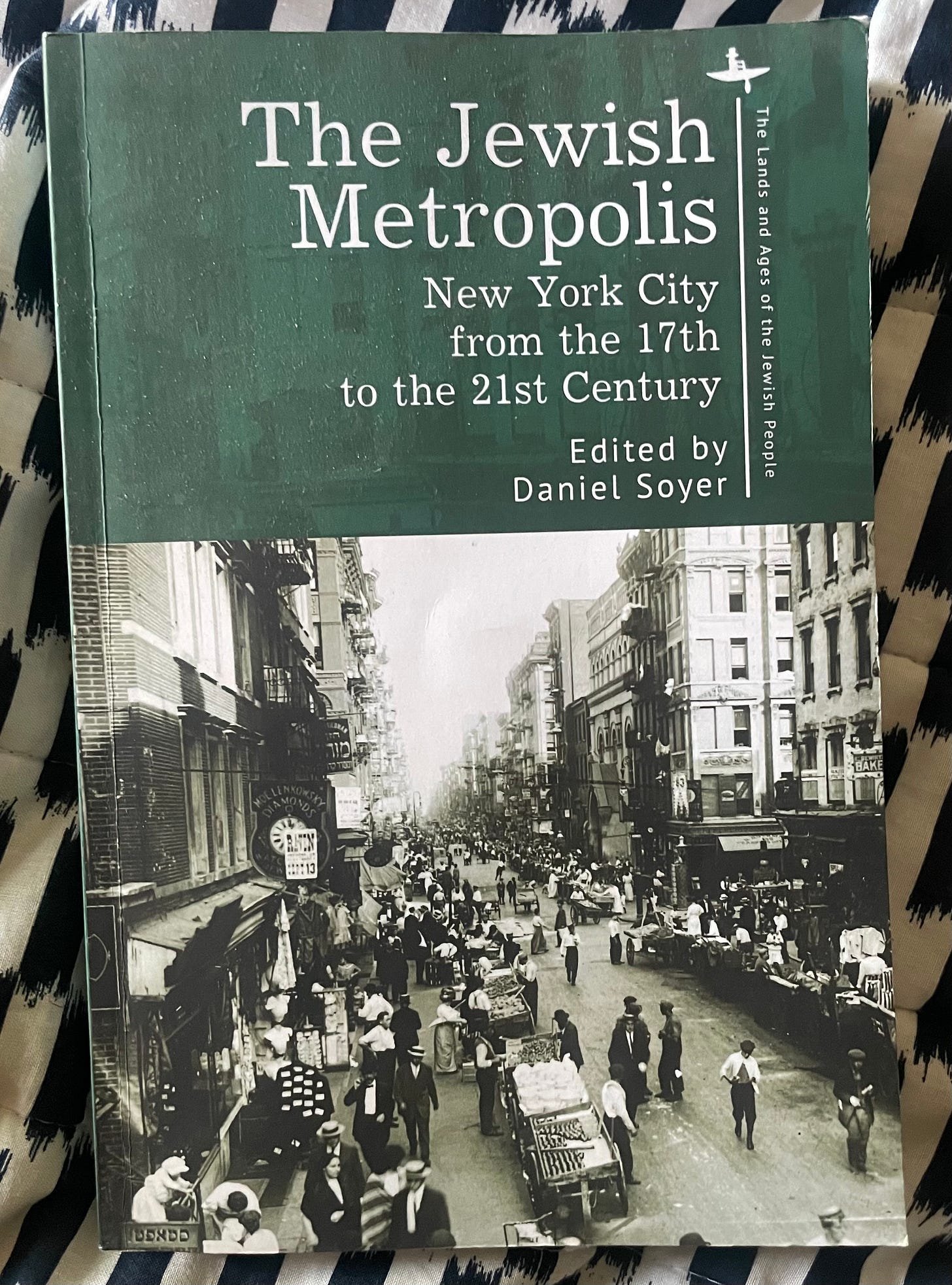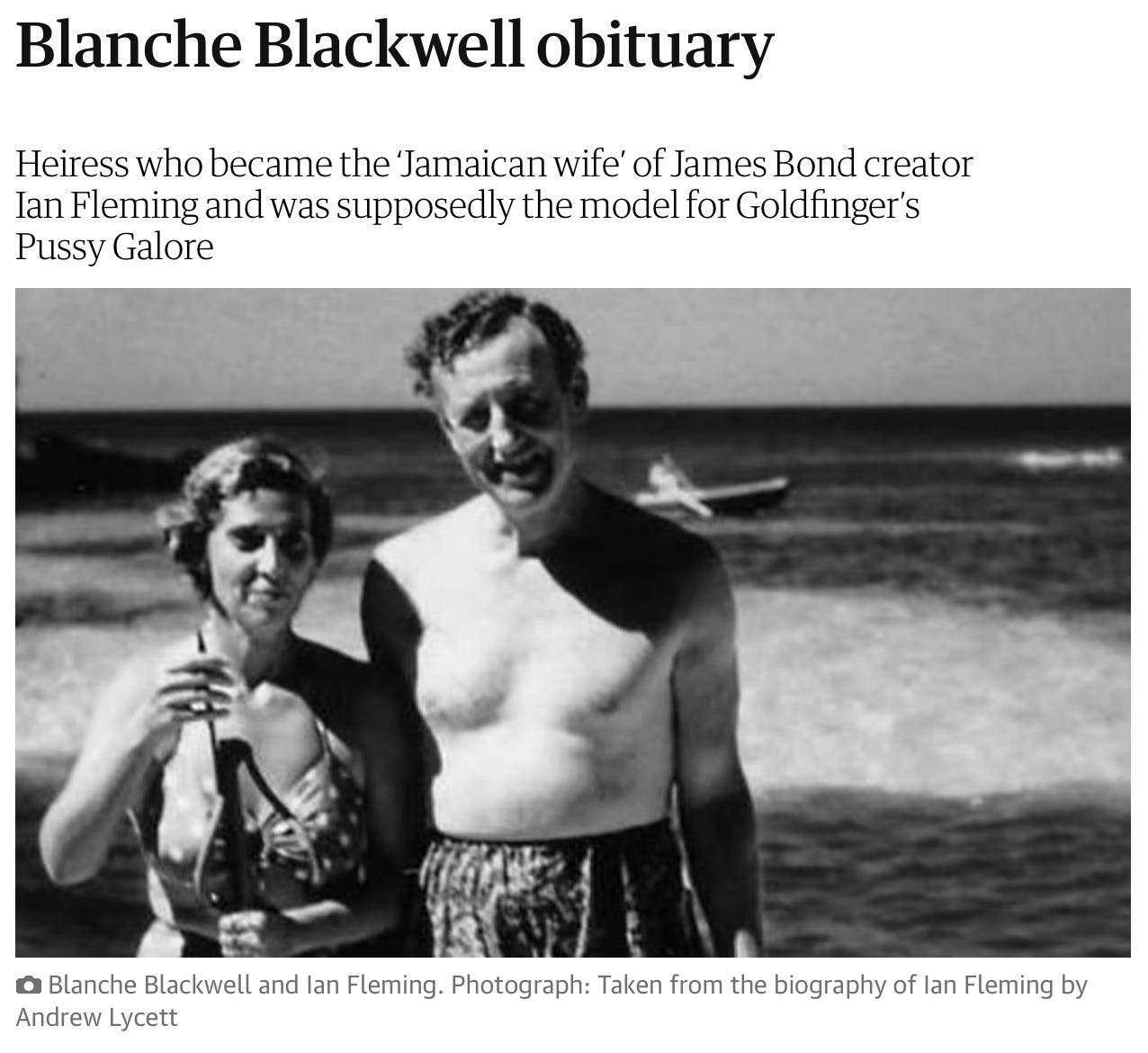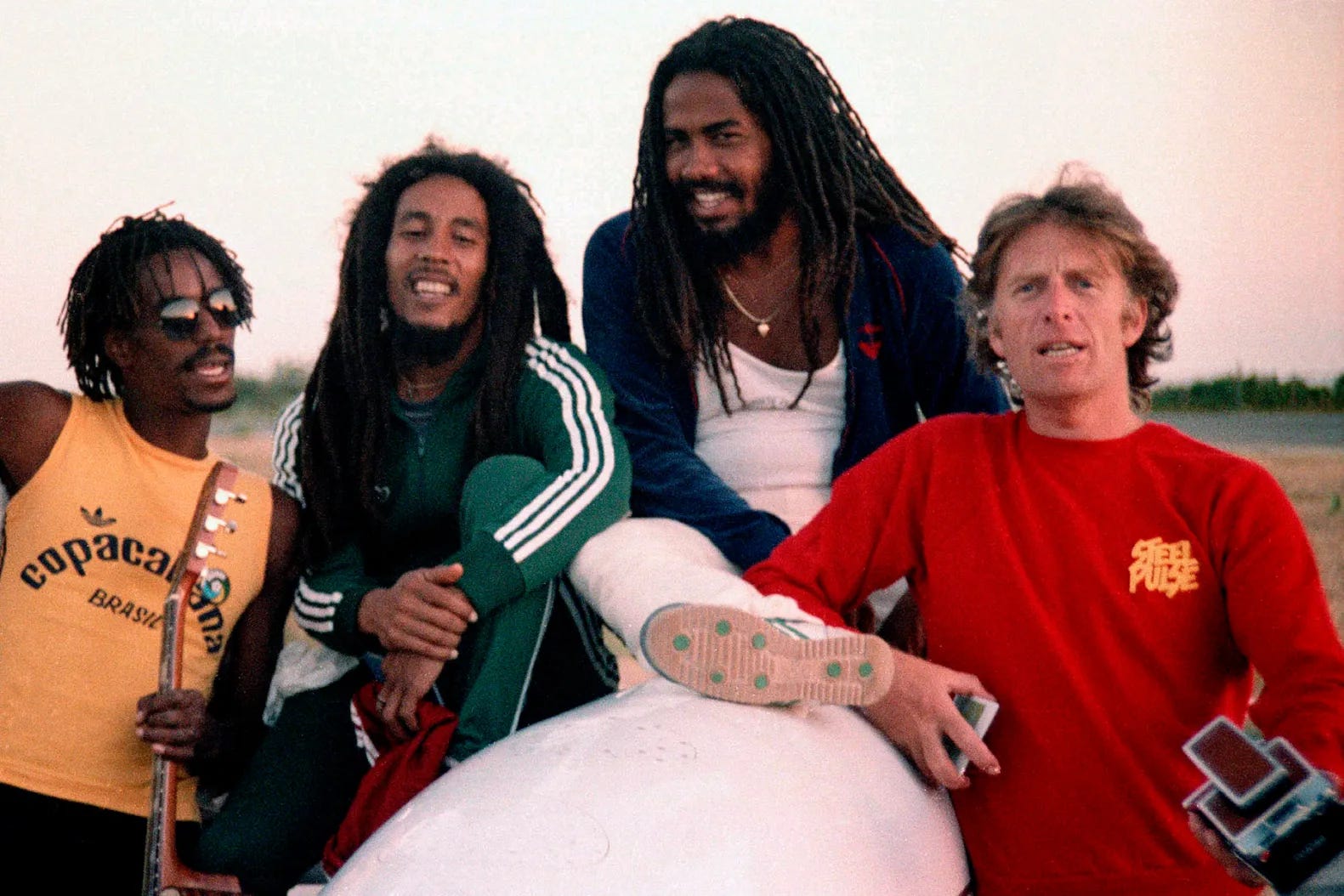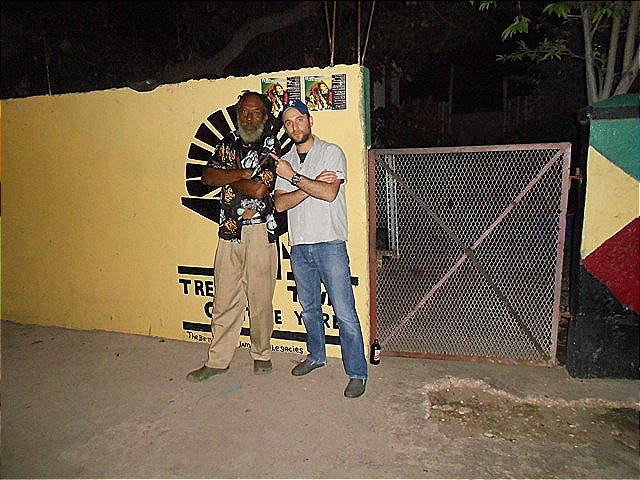Slavery, Jews, Reggae and the Durability of Power
The first Lindo set up a slave trading outpost in Jamaica in 1765 and two hundred years later his offspring is still trading — but now a cultural product shaped by slavery.
E gave me a book about the history of Jews in NYC, and it has great stuff in it — including about how New York State has been the safest and best place for Jews to live pretty much anywhere in the world. Jews got full equal rights to Christians in the 1777 state constitution, allowing open worship and the ability to vote and hold public office. There’s been some discrimination, sure. But on the whole, New York has been great and welcoming to us Jews — and much safer for much longer than [cough, cough] the other exterminationalist-colonial European project called Israel, a place that was supposed to protect Jews from harm and yet has failed badly, while driving Jews further and further into a genocidal frenzy.
The book also reminded me of something I knew but hadn’t thought about in a long time. And it's this: many early Jewish settlers in New York were deeply involved in the slave trade.
Most of these Jews were actually of Sephardic origin. That is, they originally had come from Spain, where they had been persecuted and expelled or forced to convert to Catholicism and to practice Judaism in secret. What were they doing in slave and slave-adjacent businesses? They were no different in that way than other Europeans drawn to the Caribbean and to places like Brazil to growing sugar cane and coffee and things like that. Everyone wanted sugar and coffee. That’s where the money and the opportunities were. And Sephardic Jews were specifically well placed to do well, as Jewish merchants and vast extended families were spread around the world and facilitated the establishment of trade networks. This wasn’t new. Jews had been involved in international trade going back to the Middle Ages, including the Crimean slave trade — trafficking in proto-Ukrainians to the Ottomans. Greeks and Armenians were also heavily involved in this trade.1 So the Jews weren’t special in anyway. It was just business — and an acceptable business back then. Anyway, in the New World some Sephardic families became the biggest and most powerful plantation owners in the Caribbean.
I first stumbled on this history by accident back in the early Obama Years when I was sent by Afisha, a Russian travel magazine to do a story on Jamaica. Reading up on Jamaica's political history and cultural history, I quickly found out that one of the biggest landowning families on the island traced its origins to a notable Sephardic clan, the Lindos, who themselves went back to medieval Spain. The family had been forced to convert to Catholicism but at least for a time they might have remained crypto Jews — meaning they continued practicing Judaism in secret, which a lot of Spanish Jews that were forced to covert did back then.
One branch of this family ended up in England and then in Costa Rica and Jamaica, and in the 20th century interbred with the oligarchic Blackwell family. Together the families owned huge swaths of Jamaica and also Costa Rica, producing rum and sugar and growing bananas and coffee. They were the new colonial aristocracy. A lot of their initial wealth was built up in the slave trade directly: the family started by buying and selling slaves from Africa. The original Lindo patriarch in Jamaica personally sold over 40,000 people into slavery and parleyed this money into acquiring land and plantations. In the 20th century, the Blackwell-Lindo family was connected to the United Fruit Company and eventually sold some of their plantations to this dreaded monopoly — yeah, that’s the infamously brutal colonial conglomerate that had the Central Intelligence Agency coup the government of Guatemalan President Jacob Árbenz because he proposed to do some land reform.
I became interested in this history because I was then just getting into my California Farmers Phase, looking at how big ag dominated California politics. And I saw a lot of similarities between Jamaica and California and the Lindos and the Resnicks — although the Resnicks were true newcomers, truly self-made. I realized that America is not so different than the various “banana republics” that it dominates.
Anyway, the Anglo-Sephardic-Jamaican Blackwell-Lindo clan has several interesting connections to mainstream culture. The first comes from Blanche Blackwell (born Blanche Lindos), an Anglo-Sephardic-Jamaican princess who was born in 1912 and lived on the island most of her life. In her later years, when Jamaica was becoming an exotic destination for Anglo elites, she got close to Ian Flemming, the spy-turned-novelist who created James Bond. She was his muse and, well, you could say that he was her mistress. She was supposedly his inspiration for Pussy Galore. She had all the power and money in the relationship. She gave him the land on which he built a home overlooking the Caribbean where he wrote most of the James Bond books. It's why so much of the action in his book takes place in exotic locales — he wrote his books while overlooking sapphire blue waters on the north side of Jamaica on what used to be a slave plantation. He died early but Blanche lived to 104. Not a bad plantation living!
Here’s the Guardian:
Daughter of Hilda (nee Lindo) and Percy Lindo, cousins who married, she was born into a wealthy Jamaican family, descended from Sephardic Jews from western Europe who had settled in Kingston in the mid-18th century and came to control much of the island’s commerce. Her father had helped to consolidate the family fortune in Costa Rica – where Blanche was born, in San José – before returning to Jamaica, where he owned property and produced rum.
In 1936, in London, Blanche married Joseph Blackwell, a captain in the Irish Guards and heir to the Crosse & Blackwell foods fortune. Together they ran the family estates in Jamaica and owned a string of racehorses. In 1937 their son Christopher was born. Blanche was not happy in the marriage, however. The actor Errol Flynn (“a gorgeous god,” Blackwell called him) became one of her admirers.
There is another connection to culture from this illustrious slaver-banana republic family. Blanche Blackwell’s son Chris founded the famous Island Records, which “found” and exported reggae to the world — most famously with acts like Bob Marley. Chris was “the single person most responsible for turning the world on to reggae music.”
When I first learned this and then saw Jamaica with my own eyes, it struck me as not a little weird that the son of a slaver family, which built its wealth off the exploitation of the Jamaican people to grow crops, kept this family tradition going but in a cultural way: He became a middle man for what turned out to be the other big Jamaican export: music — music produced by the off spring of the people that his ancestors had owned and worked. And not just any music, but reggae — a music born out of slave culture and expressing the cosmic injustice of a people born and forced into slavery.
Here’s what I wrote back when I visited Jamaica to write my travel article in 2012, “Coming out to places like this is a brutal experience .... A tour not so much of the sights ands sounds, but a tour of the ravages of colonial rule. Jamaica has made fortunes and helped build European civilization. And the profiteering coninues to this day. Reggae is a perfect symbol of that. Born out of the slums of former slaves, it was used to make money for the very same families that once enslaved them.”
Realizing that reggae was launched by a Sephardic-Anglo slaver family was such a big shock back then. I’m sure that the musicians Chris Blackwell signed and made popular were grateful for the opportunity — to escape poverty, to make money, to have international fame, to travel the world. What’s interesting is that it was done by a plantation guy — a guy whose family owed the island for generations, built its wealth on the backs of African slaves, and continues to own lots of land on the island. The relationship between Chris and his musicians is the relationship between master and servants — although the lines are a little blurred and everyone could get high and party together. It is such a clear example of how privilege is passed on through the generations, mutating but retaining its basic character: power and control…control over resources, over access to markets, whether the market is coffee or culture. The first Lindo set up a slave trading outpost in Jamaica in 1765 and two hundred years later his offspring is still trading.
Rebranding a slaver family as cool and hip.
I went to Jamaica kinda green. Not sure what to expect. I had never been to the Caribbean before. And the trip was sad for me — destabilizing, even. It ranked up there as one of the most depressing reporting trips I’ve done. Because here was this beautiful island with its natural wealth and abundance that was almost magical. The place and the people here were alive. And yet outside the walls of the resorts catering to American and European tourists (and quite a few American female sex tourists), the place had the feeling of a prison island — extreme poverty and deprivation surrounded by water as far as the eye can see. You can’t leave unless you have money for passage — your feet wouldn’t take you far. A prison island owned now by multinational conglomerates and the old slaver plantation families of old. The people were amazing and warm, but of course they also saw me as a walking dollar sign: a paycheck. Which was fair. I was.
After flipping through this book The Jewish Metropolis, I dug around in my notes and figured I’d post some snippets from what I wrote on that reporting trip to Jamaica back in May 2012. I only found one good photo. The rest on some old corrupted drive…
Me and with a friend outside Bob Marley’s childhood home.
Here are some snippets from I wrote/was thinking about when traveling around Jamaica back then in 2012:
It’s sunset time in the Jamaican slum of Trench Town. I’m sitting on a corner of a block lined with chickenwire shacks, wood scraps and corrugated metal, a fat spliff in my hand. I take a few puffs and lean back against the wall and survey the scene. This was supposed to be one of the most violent shanty towns in the Western Hemisphere. And Bob Marley's old house is less than 50 meters away from me. There are some barefoot children wandering around, playing in between heaps of trash. And yes, the smell of marijuana is everywhere ... This is the "Concrete Jungle" that Bob Marley sang about.
What made Trench Town all the more real was that tourism, foreigners, souvenirs — all the fake stuff that ruin the authenticity of a trip — were nowhere in sight. Instead, I was sitting with a guy named Steve, a pot dealer named Bin Bin, both born and raised in Trench Town. Both were drunk -- "under the Rum," as they said. They were open about things. Bin Bin told me he couldn't read, but that he was one of the best joint rollers in the shanty town. Steve agreed. I was supposed to get the first hit on the joint, but Steve took it out of my hand, to show me how to smoke it "Trench Town style." When the joint did come my way, I smoked and felt something, but they weren't just good vibrations. Poverty is hard—no amount of rum, or weed can hide that. So were Steve's stories—there had been a violent murder on the other side of the sidewalk…his constant talk of having to hustle to get by…by selling drugs, doing petty crime and/or begging for a living.




